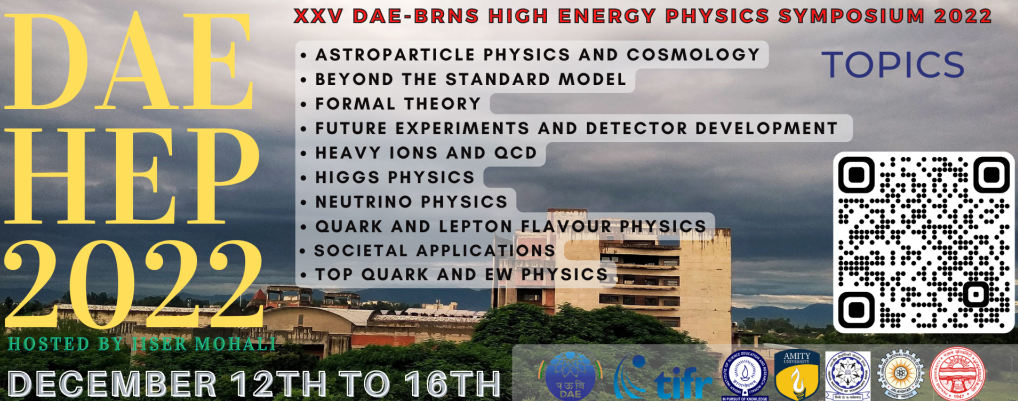Speaker
Description
The nature of neutrinos, whether Dirac or Majorana, is hitherto unknown. Assuming neutrinos to be Dirac, which needs $B-L$ to be an exact symmetry, we make an attempt to explain the observed proportionality between the relic densities of dark matter (DM) and baryonic matter in the present Universe ${\it i.e.,}\,\, \Omega_{\rm DM} \approx 5\, \Omega_{\rm B}$. Assuming the existence of heavy $SU(2)_L$ scalar doublet $(X= (X^0, X^-)^T)$ in the early Universe, an equal and opposite $B-L$ asymmetry can be generated in left and right-handed sectors by the CP-violating out-of-equilibrium decay $X^0 \to \nu_L \nu_R$ since $B-L$ is an exact symmetry. We ensure that $\nu_L-\nu_R$ equilibration does not occur until below the electroweak (EW) phase transition during which a part of the lepton asymmetry gets converted to dark matter asymmetry through a dimension eight operator, which conserves $B-L$ symmetry and remains in thermal equilibrium. The remaining $B-L$ asymmetry then gets converted to a net B-asymmetry through EW-sphalerons which are active at a Temperature above 100 GeV. To alleviate the small-scale anomalies of $\Lambda$CDM, we assume the DM to be self-interacting via a light mediator, which not only depletes the symmetric component of the DM but also paves a way to detect the DM at terrestrial laboratories through scalar portal mixing.
| Session | Beyond the Standard Model |
|---|
